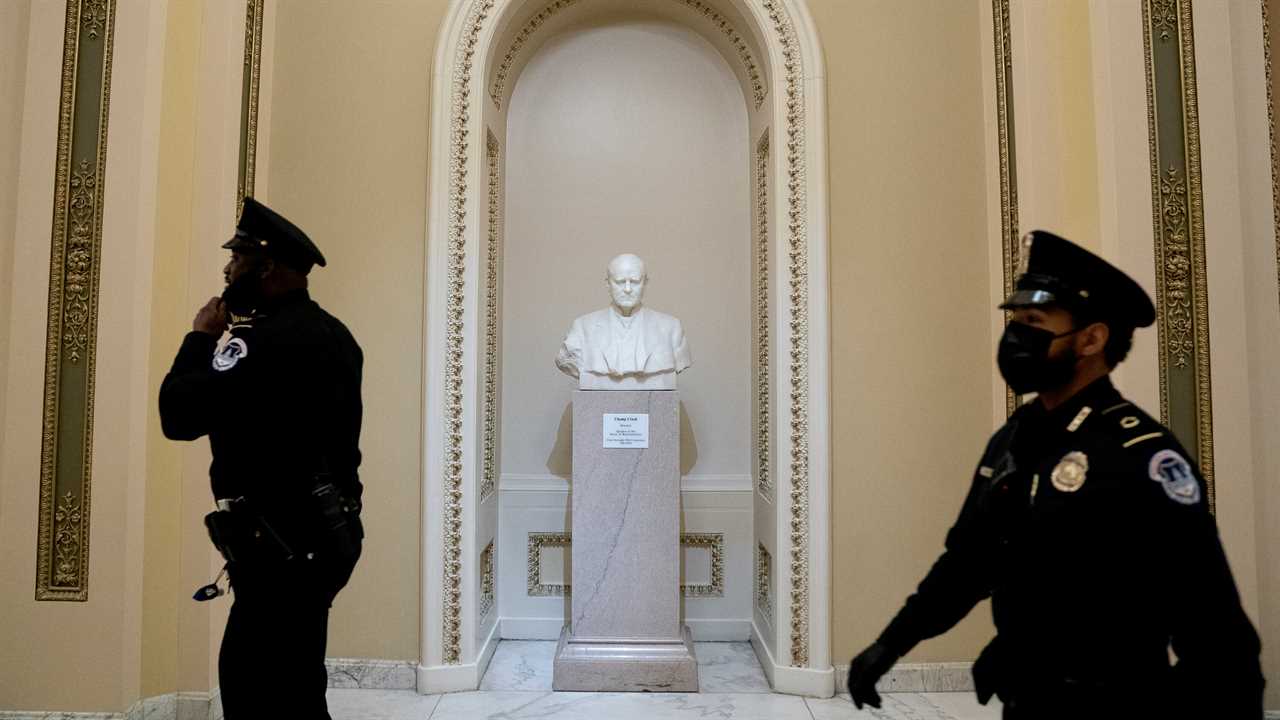
WASHINGTON — The top operations and maintenance official of the United States Capitol told lawmakers on Wednesday that the costs of the Jan. 6 attack will exceed $30 million, as his office works to provide mental health services, increase security and repair historical statues and other art damaged in the riot.
“The events of Jan. 6 were difficult for the American people, and extremely hard for all of us on campus to witness,” J. Brett Blanton, the architect of the Capitol, testified as he and other top officials gave their first extensive look at the damage inflicted on the House’s fine art collection and the strain on congressional employees from the assault.
Speaking to the House Appropriations Committee, where lawmakers are considering an emergency bill to cover the costs of the most violent attack on the Capitol in two centuries, Mr. Blanton described how his staff sheltered congressional aides as “the crowd began crashing through windows and prying open doors.”
As staff members huddled inside, the inauguration platform they had been diligently assembling was wrecked: sound systems and photo equipment irreparably damaged or stolen, two lanterns designed and built by the eminent landscape architect Frederick Law Olmsted in the late 19th century ripped from the ground, and blue paint tracked all over the stone balustrades and into the hallways. Inside, busts of former speakers of the House and a Chippewa statesman, a statue of Thomas Jefferson and paintings of James Madison and John Quincy Adams were coated in fire extinguisher and other chemicals, including yellow dye that could stain.
Outside the physical damage, the officials detailed a substantial increase in demand for mental health counseling, with an office that typically handles about 3,000 calls per year surging to more than 1,150 interactions with employees, managers and members of Congress in six weeks.
“While the physical scarring and damage to our magnificent Capitol building can be detected and repaired, the emotional aspects of the events of Jan. 6 are more difficult to notice and treat,” Catherine Szpindor, the House’s chief administrative officer, told the panel.
Mr. Blanton said the committee had already approved the transfer of $30 million to maintain the temporary fencing around the Capitol complex through March 31, and support National Guard troops stationed in the building. But he said more funds would most likely be needed to address the intensified security and support for both the building and its inhabitants.
Farar Elliott, the House curator, requested $25,000 for emergency repair and conservation of objects in the House collection. While her office normally budgets for “a single unforeseen conservation event” per year, usually as a result of an accident, the damage from Jan. 6 was “significant,” she said.
Lawmakers also pressed Mr. Blanton about his role on the Capitol Police Board, whose three other members before Jan. 6 all resigned under pressure after the riot, and his knowledge of the discussions among the complex’s law enforcement leaders before the attack. The questions at times threatened to eclipse the purpose of the hearing, to discuss mental health and the physical toll on the Capitol.
Mr. Blanton said he had met with the board 12 times over his first year in the role. He said he was not included in discussions among the board’s three other members at the time, former Chief Steven A. Sund of the Capitol Police and Congress’s two former sergeants-at-arms, about calling for the National Guard to assist with the violence on Jan. 6.
“As I have shared previously, then-chief Sund did not reach out to the architect of the Capitol with a request for an emergency declaration or interest seeking National Guard support in advance of the breach,” Mr. Blanton said.
Lawmakers also pressed for details about the fencing, lined with razor wire, encircling the Capitol complex, and the preservation of artifacts from the attack, including shattered window panes that have already been carefully removed. After a security briefing, several senators called for the fencing to be eventually taken down.
“Our first duty to those is to make sure the objects that already exist in the House collection are cared for, best we can,” Ms. Elliott said in response to a question from Representative Katherine Clark, Democrat of Massachusetts. After that, she added, her staff would “take stock of what are the artifacts that tell the story of the people’s House right up through today.”
While some of the prized pieces in the House collection were saved by curatorial workers — including a silver inkstand dating to the early 1800s, the oldest object in the House — a handful of statues, busts and paintings were damaged. Most of the items are in hallways near the House chamber, and were largely damaged by chemical sprays.
Far more difficult to ascertain is the psychological burden on the hundreds of Capitol Hill staff members, many of whom sheltered in place as the mob broke through doors and windows and ransacked the building.
“At this rate, counseling and consultation services in 2021 would increase by 65 percent over 2020 and by 200 percent as compared to more typical recent years,” Ms. Szpindor told lawmakers. “While the team’s initial response to the insurrection is commendable, it soon became evident that the caseload would require additional resources.”






